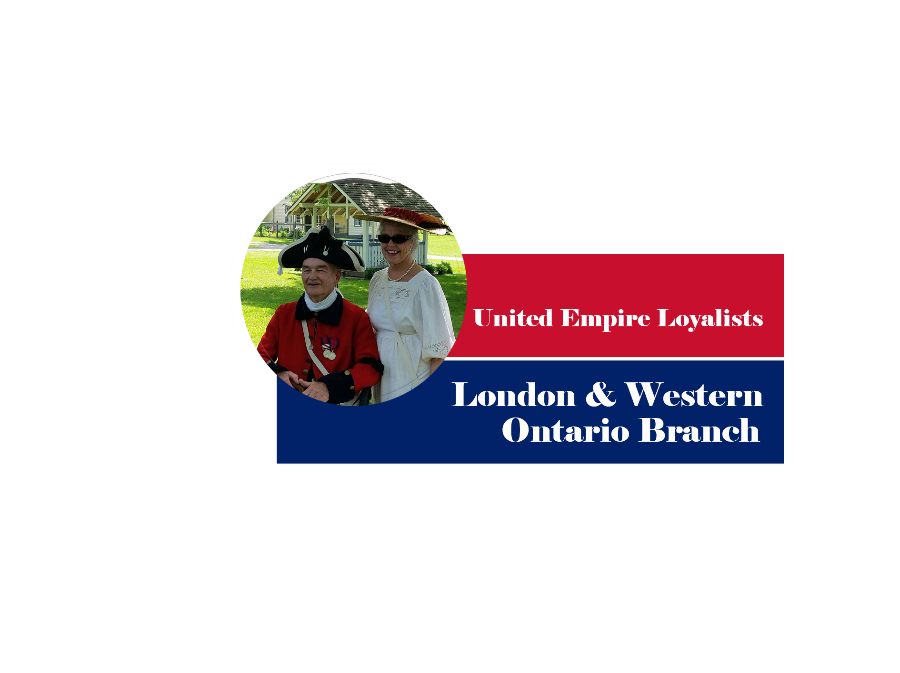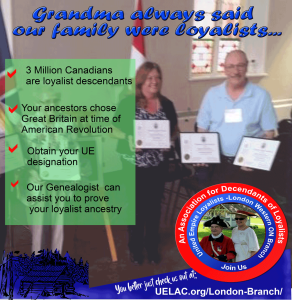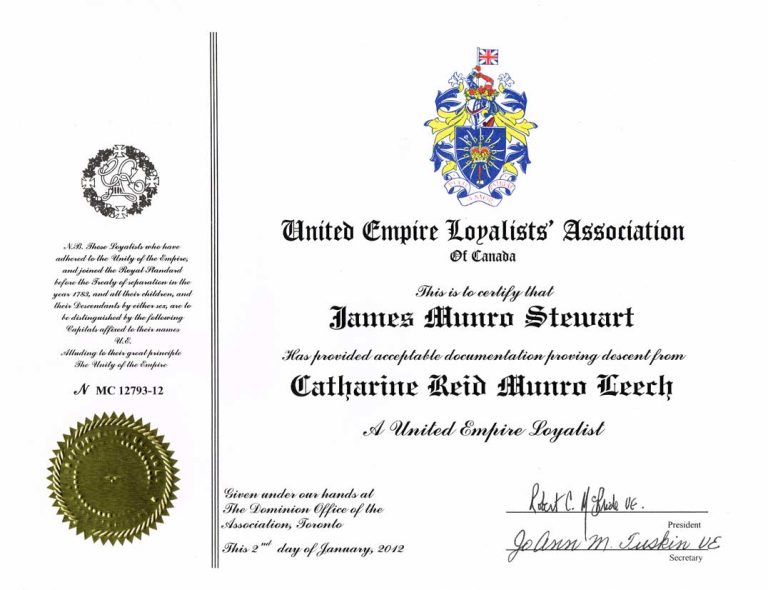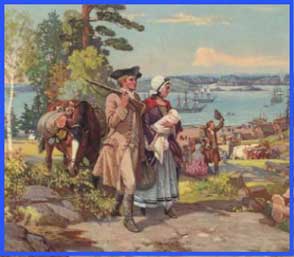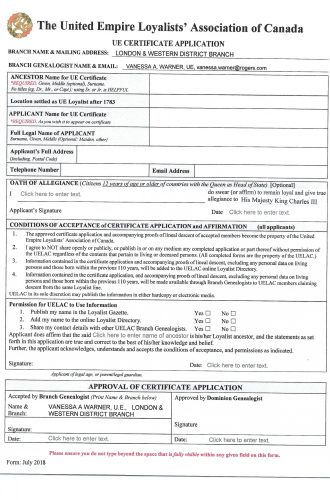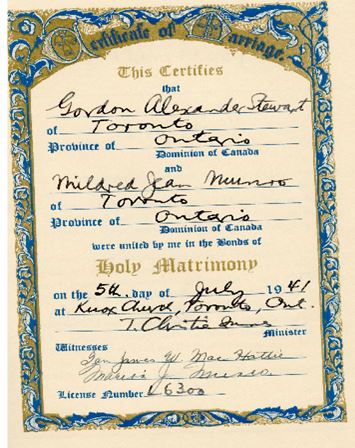Who were considered Loyalists?
They were residents of the American Colonies who joined the Royal Standard, supporting King George III, prior to the Treaty of Separation
Other considered Loyalists were those who were persecuted, their land confiscated and who fled the USA for a territory remaining under British rule, demonstrating their loyalty
A soldier who served in an American Loyalist regiment and disbanded in Canada
Members of the Six Nations of either the Grand River or Bay of Quinte reserves, who migrated to Canada
